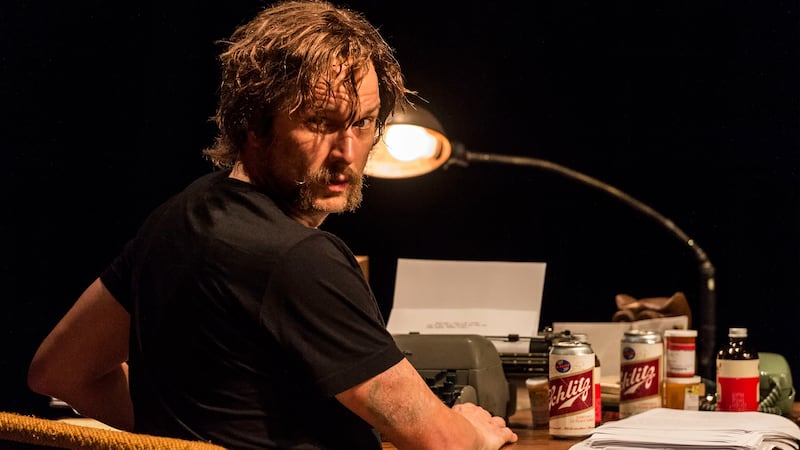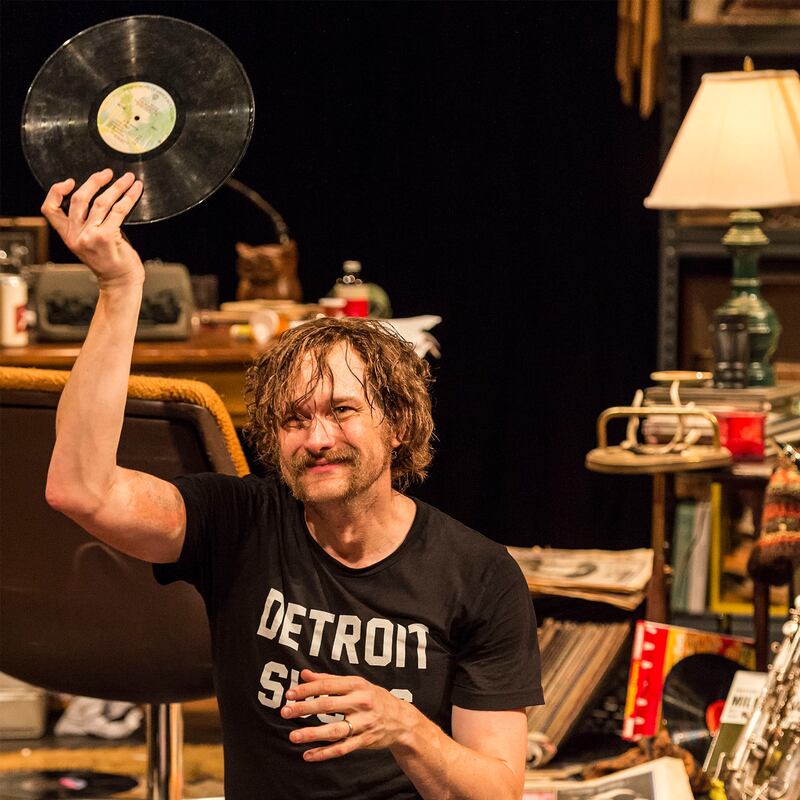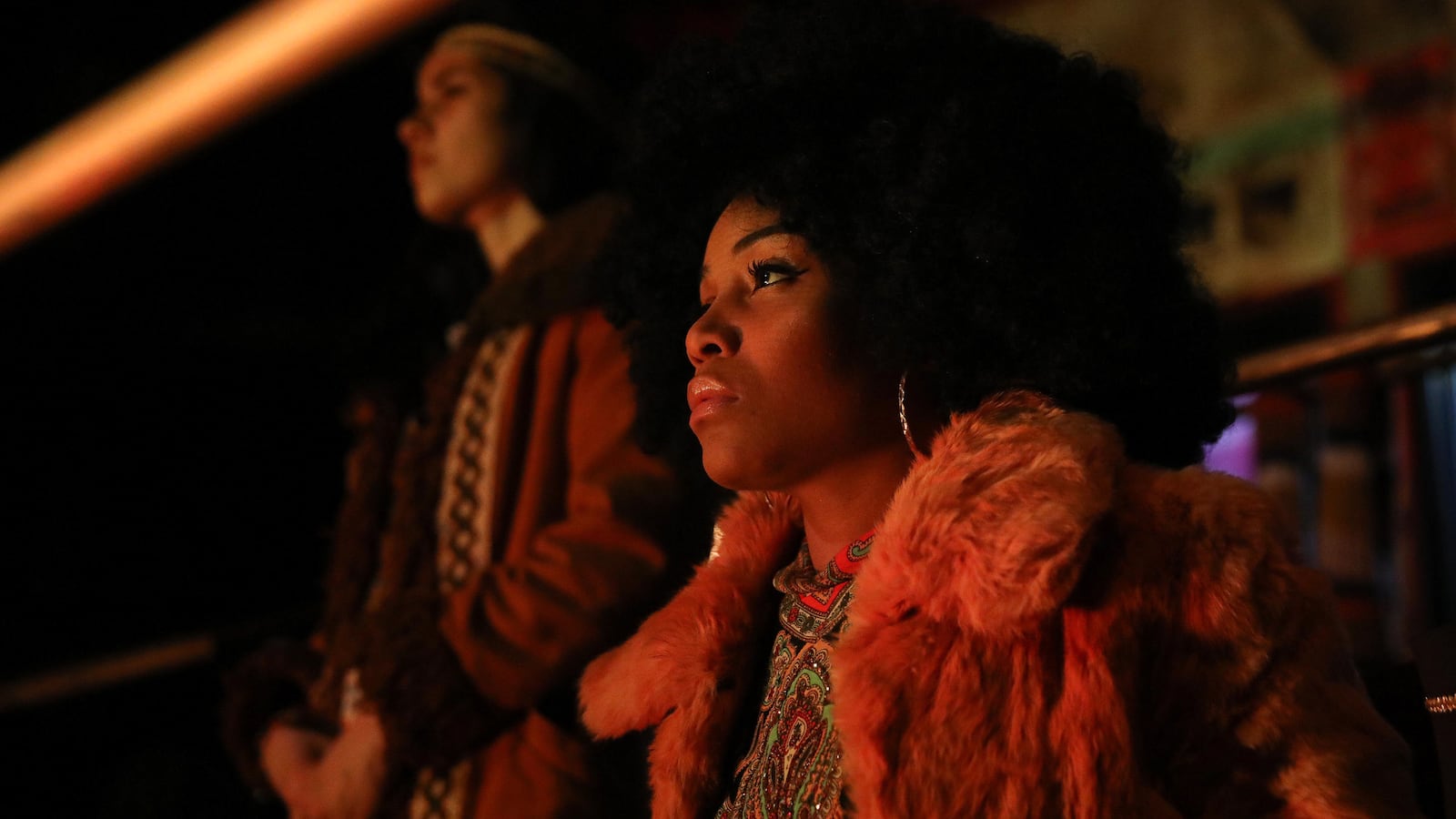Music geekdom is a terrible affliction. You have to mostly suffer in private, since who among your friends and loved ones could ever understand that the original Miles Davis Quintet isn’t jazz so much as pure gold distilled into the form of sound, or that the Chicago post-rock scene in the late 1990s rivaled the grunge scene in Seattle in the early ’90s for its brilliance and depth or that no, you can’t go out tonight, you have to go home and listen to the first Faces album on repeat.
Music geekdom explains how a few riffs of guitar can transport you fully back to an afternoon in high school. It is a fever best borne alone.
But this disease gets a full and unabashed airing in a pair of shows that were a part of the the Public Theater’s Under the Radar festival, a 14-year-old showcase of some of the best cutting edge theater from around the world.
The two shows are in a dialog with each other about just this malady: being punch drunk, madly in love with rock n’roll.
Dialog though is an odd word to use here, since that building block of any decent play is entirely absent from both of these performances.

A scene from ‘The Hendrix Project,’ running Jan. 11-14 at BRIC House as part of The Public’s 14th Annual Under the Radar Festival.
Nicolas SavignanoThe Hendrix Project unfolds wordlessly. It is the story of 12 people--kids we would probably call them now, since they are somewhere between the ages of being old enough to buy cigarettes but not quite old enough to buy booze—who have to come to rafters of Fillmore East in New York City on New Year’s Eve 1969 to watch Jimi Hendrix and his Band of Gypsys tear the roof off the place in one of the most fabled concerts in rock history.
How to Be a Rock Critic is a one man show about the antic life of Lester Bangs, the gonzo rock critic who invented the word “punk,” defined a generation’s taste in music and brought a kind of grab-them-by-the-throat style of criticism that the art form hadn’t really seen before.

A scene from ‘How to Be a Rock Critic,’ running Jan. 5-15 at The Public Theater as part of The Public’s 14th Annual Under the Radar Festival.
Craig SchwartzHere the words coming spilling out, one on top of the other in a great wave, mostly as flights of fancy on the meaning of rock stardom, or art, or life.
“Look, there have always been stars and stars have always been created and the public has always invested them with everything we think we don't have, because the whole point of rock & roll is to create fantasies. The whole point of it is myth. And who am I, Lester Bangs, World Famous Rock Critic, to tell you what your myth is?” Erik Jensen, as a bravura Bangs, says early on. “Enjoy your grand delusions. Ultimately being a ‘critic’ just means wanting to inflict your tastes on other people. It’s a very honest impulse: I simply want you to like the same things I like. I need you to like them. Then I will not be alone.”
Both of these shows are acts of love, the product of a kind of pure fandom that veers into evangelism for the objects of their heart. And if you fail to get it, both shows try harder, like that one friend who thinks you will really like Captain Beefheart if you just give it one more listen, and this time really listen.
The Hendrix Project can scarcely be called a play. Directed and conceived of by Spike Lee collaborator Roger Guenveur Smith, it is more of a movement piece while a rock concert comes bursting out of the theater’s speakers.
The 12 audience members sway to the music, mutedly scream with delight, gaze at the show in a dazed wonder, mime taking copious amounts of alcohol and drugs and pair off with each other in ever-rotating combinations, with a few of them sneaking off to a windowed room behind the balcony to screw.
It is Dec. 31, 1969, and the ’60s are ending with a thunderclap as soon as the last bars of “We Gotta Live Together” fade away. In a short amount of time Hendrix would be dead of a drug overdose, and that halcyon decade of peace and love would give way to a far darker decade of Watergate, Jonestown, Kent State and Three Mile Island.
You will wait in vain for a coherent narrative to form out of The Hendrix Project. It is a co-production with CalArts Center For New Performance and feels a bit like a classroom exercise designed to teach students how to move through space.
It is as if Smith invited you up to his dormroom to check out this new Hendrix album that will Blow. Your. Mind.
There is no way out until the needle finally lifts off the record player.
How to Be a Rock Critic provides the commentary that The Hendrix Project lacks, as Bangs waxes poetic about what makes The Stooges so great and why pretty much every other band or artist you may like is just a phony purveyor of bullshit.
Rock stars, Bangs says (while poignantly enough holding a Jimi Hendrix record) are “like gods. They terrify us even as we bow before them. And so we build them up and rip them down. We encourage them in their disintegration. It's cultural cannibalism.”
As someone who, though he would scarcely admit it, attempted to put the rock critic in the same pantheon as the rock star, once even climbing on stage with his typewriter and writing a review in real time during a J. Geils Band concert, Bangs was guilty of the same kind of cultural self-cannibalism.
Indeed, the answer to the question How to Be a Rock Critic seems to be: drink vodka from the bottle, swallow cough medicine whole, and ingest whatever pills you can find in your pocket.

A scene from ‘How to Be a Rock Critic,’ running Jan. 5-15 at The Public Theater as part of The Public’s 14th Annual Under the Radar Festival.
Craig SchwartzThe show takes place in Bangs’ living room, piled high with books and records and cough medicine and beer cans, and Bangs stumbles out on stage asking us to go away. He is just about to finish a review. He changes his mind and invites us to stay, tossing a couple of those beers out to the audience.
It is fair to wish that he hadn’t been so gracious. Even though the show is only 80 minutes, it still feels as if you are trapped in the apartment of a rock nerd, hopped up on who knows what as he presses just one more album you got to hear on you, tells one more anecdote from life on the road, gives one last chestnut about Art and Life and Beauty.
Both of these plays love rock n’roll, and they love what they love so sincerely and truly that you want to love it to, just for their sake. But at the risk of a Bangian flight of fancy myself, that’s the thing about love—it is personal and idiosyncratic, and it never makes sense to anybody else. And despite some really great music, these plays don’t really either.





